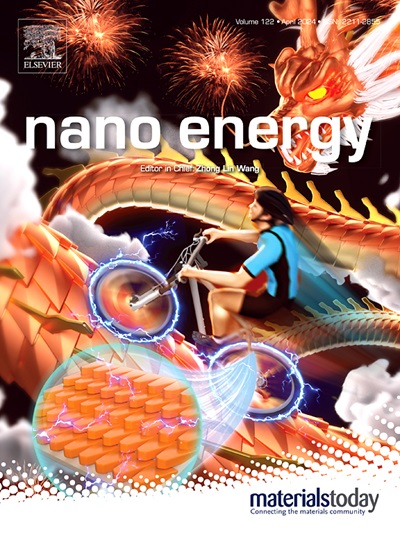作为高稳定性锂硫电池功能电催化剂的 Fe3O4/Fe2N 异质结构空心微球
IF 16.8
1区 材料科学
Q1 CHEMISTRY, PHYSICAL
引用次数: 0
摘要
锂硫电池(LSBs)具有理论容量大、能量密度大、价格低廉、环境友好等优点,被认为是下一代储能设备的理想选择。然而,众所周知的穿梭效应和较差的氧化还原动力学极大地阻碍了其商业应用。本文通过在Fe3O4空心微球表面原位生长Fe2N作为阴极电催化剂,开发了Fe3O4/Fe2N异质结构。这种异质结构有效地结合了硫的固定化和强化的氧化还原转化动力学,提高了高速率的能力和可逆循环寿命。Fe3O4空心微球增强了多硫化物的化学吸附位点,抑制了多硫化物的穿梭。同时,Fe2N的加入显著加快了多步多硫化物氧化还原反应的动力学和热力学。这些优势通过operando表征和电化学测试得到证实,表明吸附相互作用增强,氧化还原反应加速。此外,这种结构提供了优良的导电性,使高电荷转移效率。利用这些优点,由Fe3O4/Fe2N异质结构组装的硬币电池在0.2 C时显示出良好的初始容量为1128.37 mAh g-1,而100次循环后的可逆容量达到900.34 mAh g-1。在1℃下循环1000次后,平均比容量衰减低至0.0391%。本文章由计算机程序翻译,如有差异,请以英文原文为准。

Fe3O4/Fe2N heterostructured hollow microspheres as functional electrocatalysts for high stability lithium-sulfur batteries
Lithium-sulfur batteries (LSBs) are considered as a promising candidate for next-generation energy storage devices due to the high theoretical capacity, giant energy density, affordability, and environmental friendliness. However, the notorious shuttle effect and poor redox kinetics of lithium polysulfide (LiPS) tremendously hinder their commercial application. Herein, we have developed a Fe3O4/Fe2N heterostructure by growing Fe2N in situ on the surface of Fe3O4 hollow microspheres as a cathode electrocatalyst. This heterostructure effectively integrates the immobilization of sulfur species and reinforced redox transformation kinetics, enhancing the high-rate capability and reversible cycling lifetime. The Fe3O4 hollow microspheres enhance chemisorption sites and inhibit the shuttle of polysulfide. Meanwhile, incorporating Fe2N significantly accelerates the kinetics and thermodynamics of multistep polysulfide redox reactions. These advantages are confirmed through operando characterizations and electrochemical tests, demonstrating enhanced adsorption interactions and accelerated LiPS redox reactions. Also, this configuration provides excellent conductivity and enables high charge transfer efficiency. Leveraging these merits, a coin cell assembled with Fe3O4/Fe2N heterostructure shows a decent initial capacity of 1128.37 mAh g−1 at 0.2 C, while the reversible capacity over 100 cycles attained 900.34 mAh g−1. Furthermore, the average specific capacity fade is as low as 0.0391 % per cycle after 1000 cycles at 1 C.
求助全文
通过发布文献求助,成功后即可免费获取论文全文。
去求助
来源期刊

Nano Energy
CHEMISTRY, PHYSICAL-NANOSCIENCE & NANOTECHNOLOGY
CiteScore
30.30
自引率
7.40%
发文量
1207
审稿时长
23 days
期刊介绍:
Nano Energy is a multidisciplinary, rapid-publication forum of original peer-reviewed contributions on the science and engineering of nanomaterials and nanodevices used in all forms of energy harvesting, conversion, storage, utilization and policy. Through its mixture of articles, reviews, communications, research news, and information on key developments, Nano Energy provides a comprehensive coverage of this exciting and dynamic field which joins nanoscience and nanotechnology with energy science. The journal is relevant to all those who are interested in nanomaterials solutions to the energy problem.
Nano Energy publishes original experimental and theoretical research on all aspects of energy-related research which utilizes nanomaterials and nanotechnology. Manuscripts of four types are considered: review articles which inform readers of the latest research and advances in energy science; rapid communications which feature exciting research breakthroughs in the field; full-length articles which report comprehensive research developments; and news and opinions which comment on topical issues or express views on the developments in related fields.
 求助内容:
求助内容: 应助结果提醒方式:
应助结果提醒方式:


